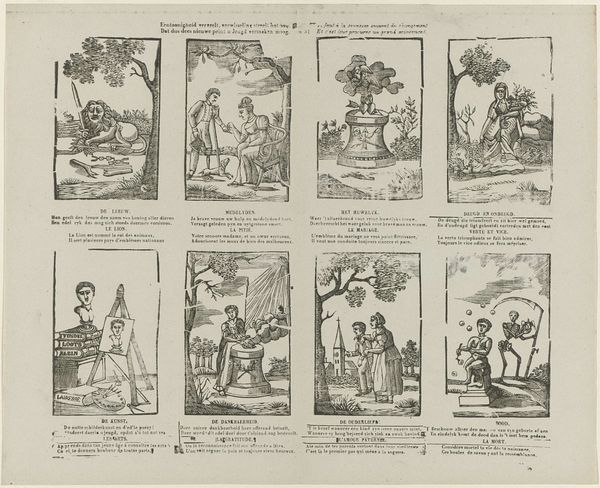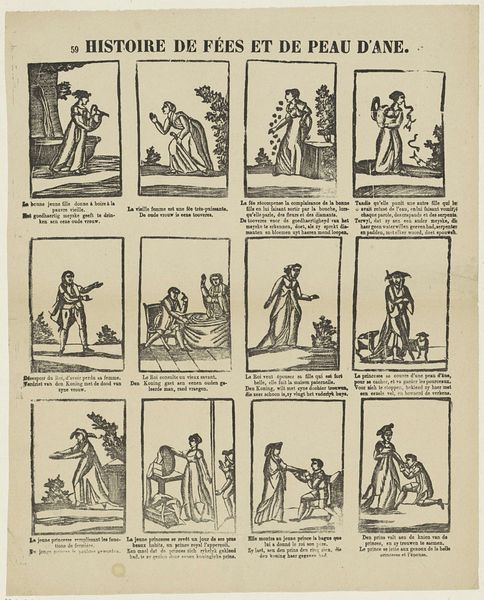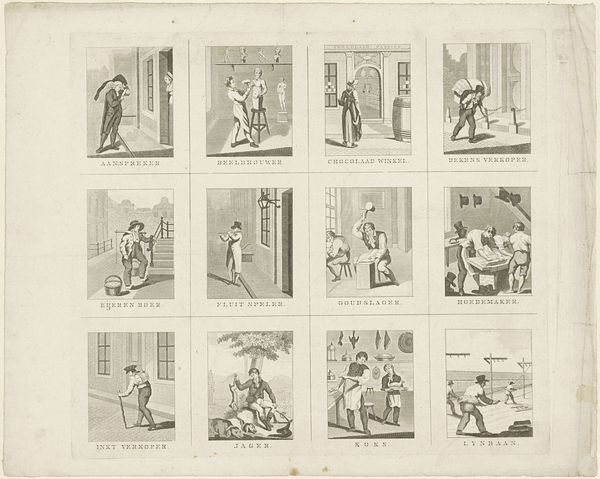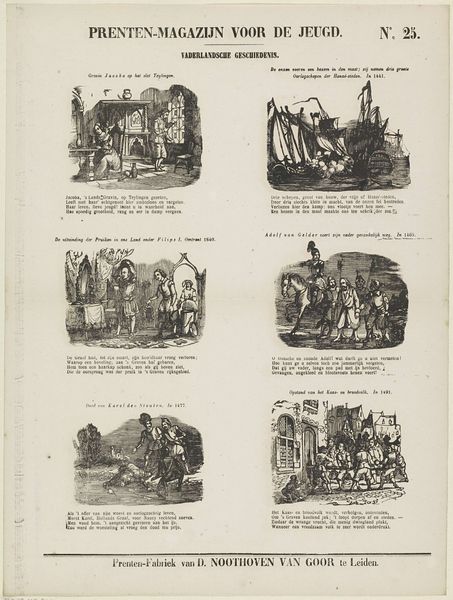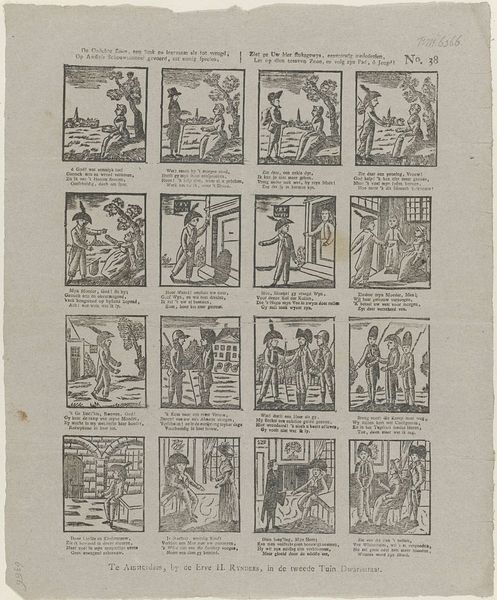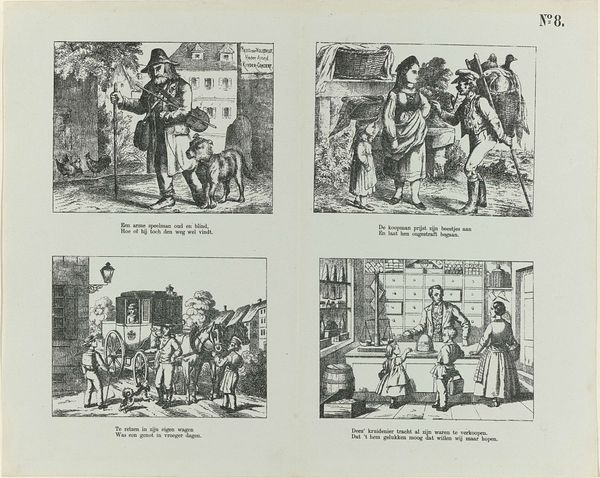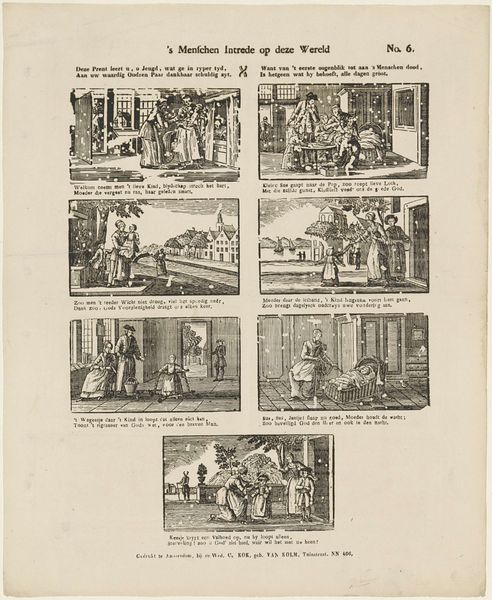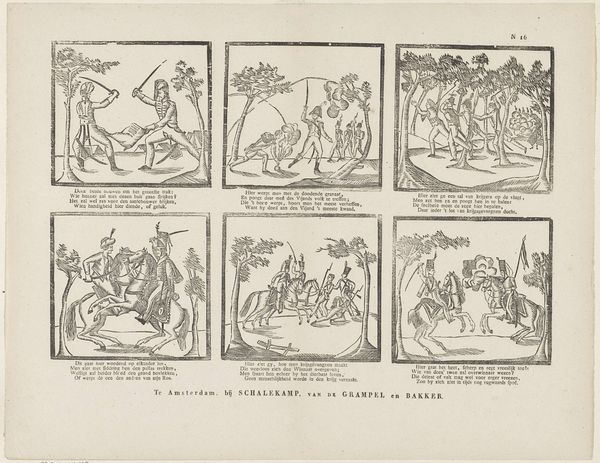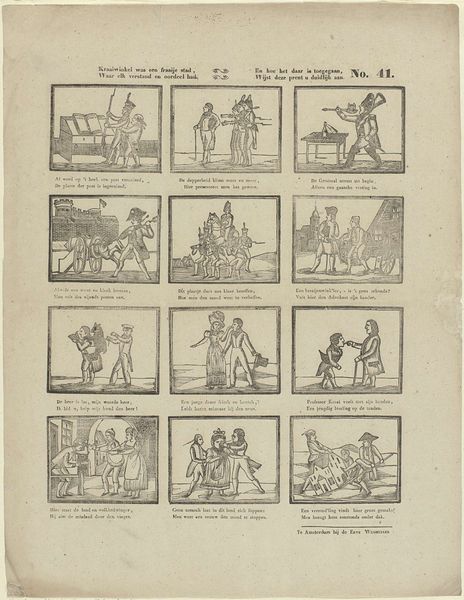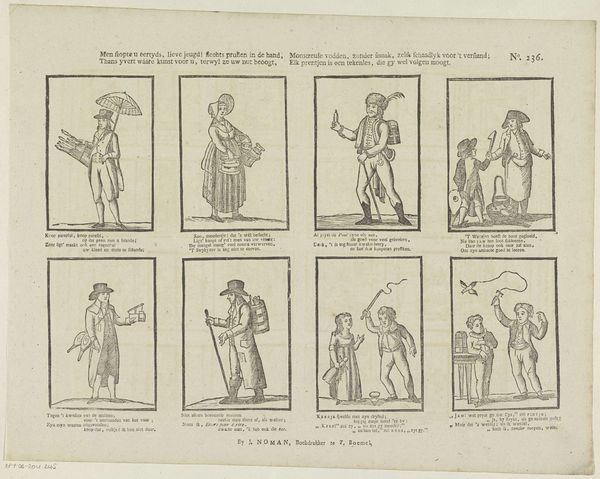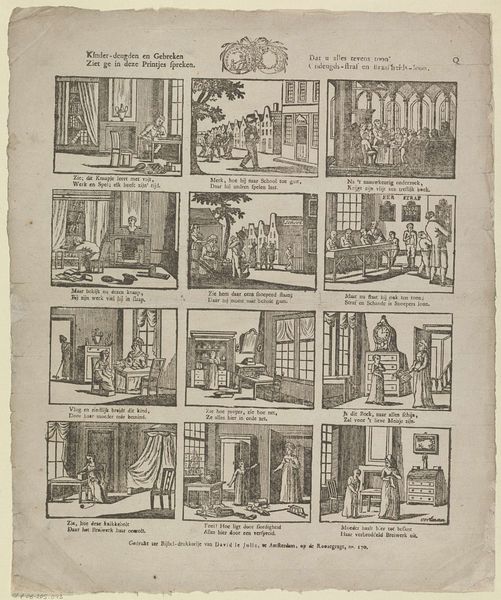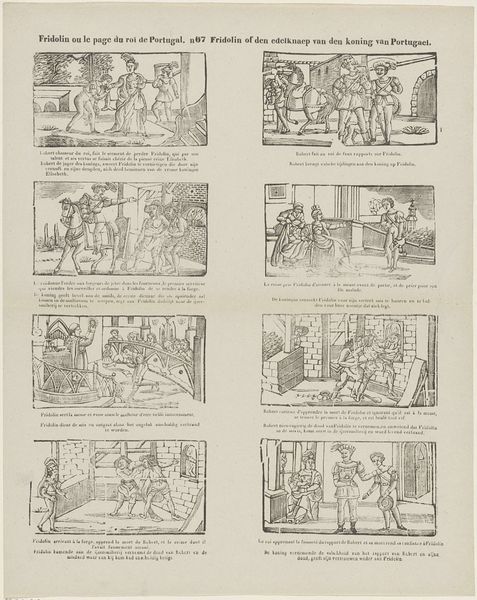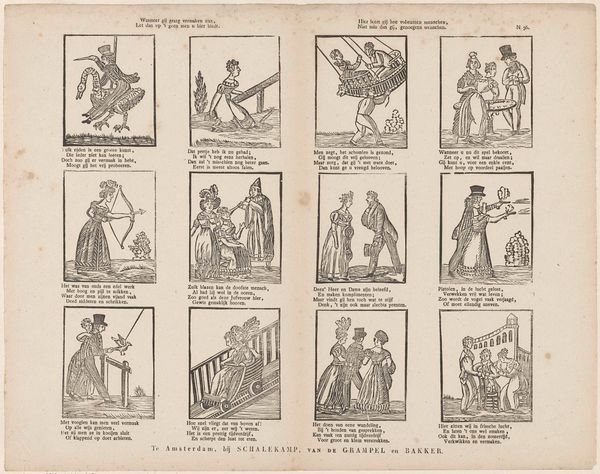
drawing, print, ink
#
drawing
#
comic strip sketch
#
medieval
#
narrative-art
# print
#
personal sketchbook
#
ink
#
idea generation sketch
#
sketchwork
#
ink drawing experimentation
#
pen-ink sketch
#
comic
#
pen work
#
sketchbook drawing
#
storyboard and sketchbook work
#
sketchbook art
Dimensions: height 337 mm, width 385 mm
Copyright: Rijks Museum: Open Domain
Curator: What strikes me first about this image is its charming, almost haphazard, quality. It reminds me of those penny dreadfuls, the lurid illustrated stories that were hawked in Victorian London. Editor: You know, this print, "Geschiedenis van Robert de duivel / Aventures de Robert le diable," created sometime between 1856 and 1900 by Glenisson & Zonen, taps into a much older tradition of popular narrative. The title itself is bilingual, telling us something about its intended audience. Curator: Right, the layout feels very storyboard-like, each vignette a beat in Robert's… well, devilish adventure, I suppose. I love how roughly sketched it all is. The energy practically jumps off the page. But it seems a dark subject, wouldn't you say? Lots of what appears to be struggle or people trapped. Editor: Absolutely. Consider the context. Illustrated narratives like this offered a readily accessible, visual form of moral instruction, reinforcing social norms, and even warning against behaviors deemed… well, "devilish." Robert's story would be a lens through which to discuss power, morality, and social justice in Belgium. Curator: That's an interesting observation. It goes to show that the act of presenting the material that way makes it understandable, whether in images or words, these moral messages sink into the viewer's psyche, guiding thoughts, attitudes, and beliefs, perhaps even inspiring good deeds. Editor: Exactly. The medium of cheap prints democratized access to such stories, making them powerful tools for shaping public opinion and values. It's fascinating to think about how visual narratives played such a significant role in the lives of everyday people. Curator: Indeed. I wonder what it tells us about the period that it would want to teach its populace in such a visually impactful way. Perhaps we were a less attentive society. One has to assume images might hit harder or speak to the working classes directly in an era with larger divides between different class demographics. Editor: The use of images certainly underscores their role in communication across different literacy levels, allowing such art objects to function as a point of connection within an evolving cultural landscape. Curator: Looking at this storyboard now makes you consider if comic books, the graphic novel format, were simply continuations of what was once the illustrated story format presented so modestly. The stories may have evolved but are the root storytelling intentions identical? Fascinating, indeed.
Comments
No comments
Be the first to comment and join the conversation on the ultimate creative platform.
